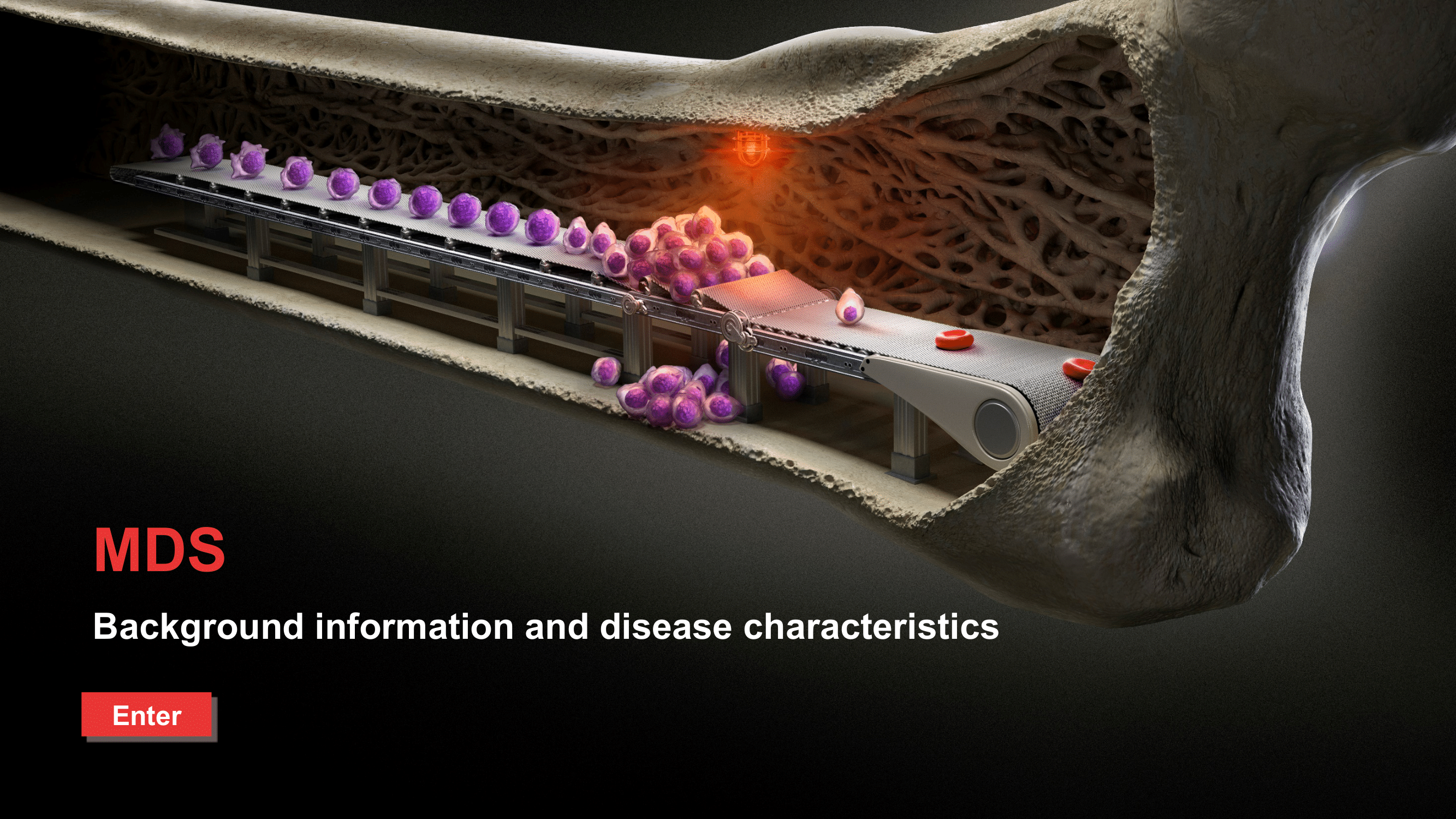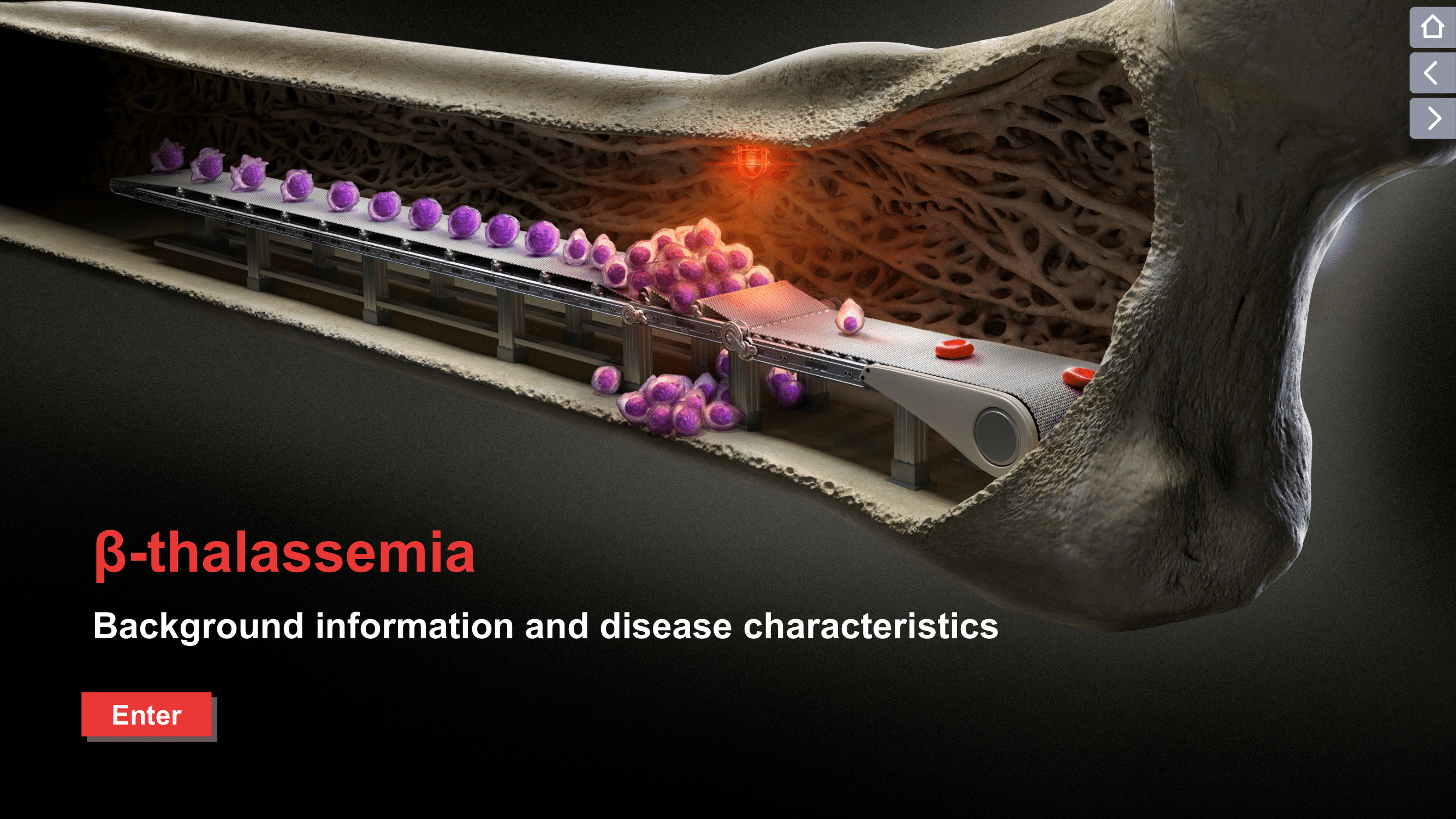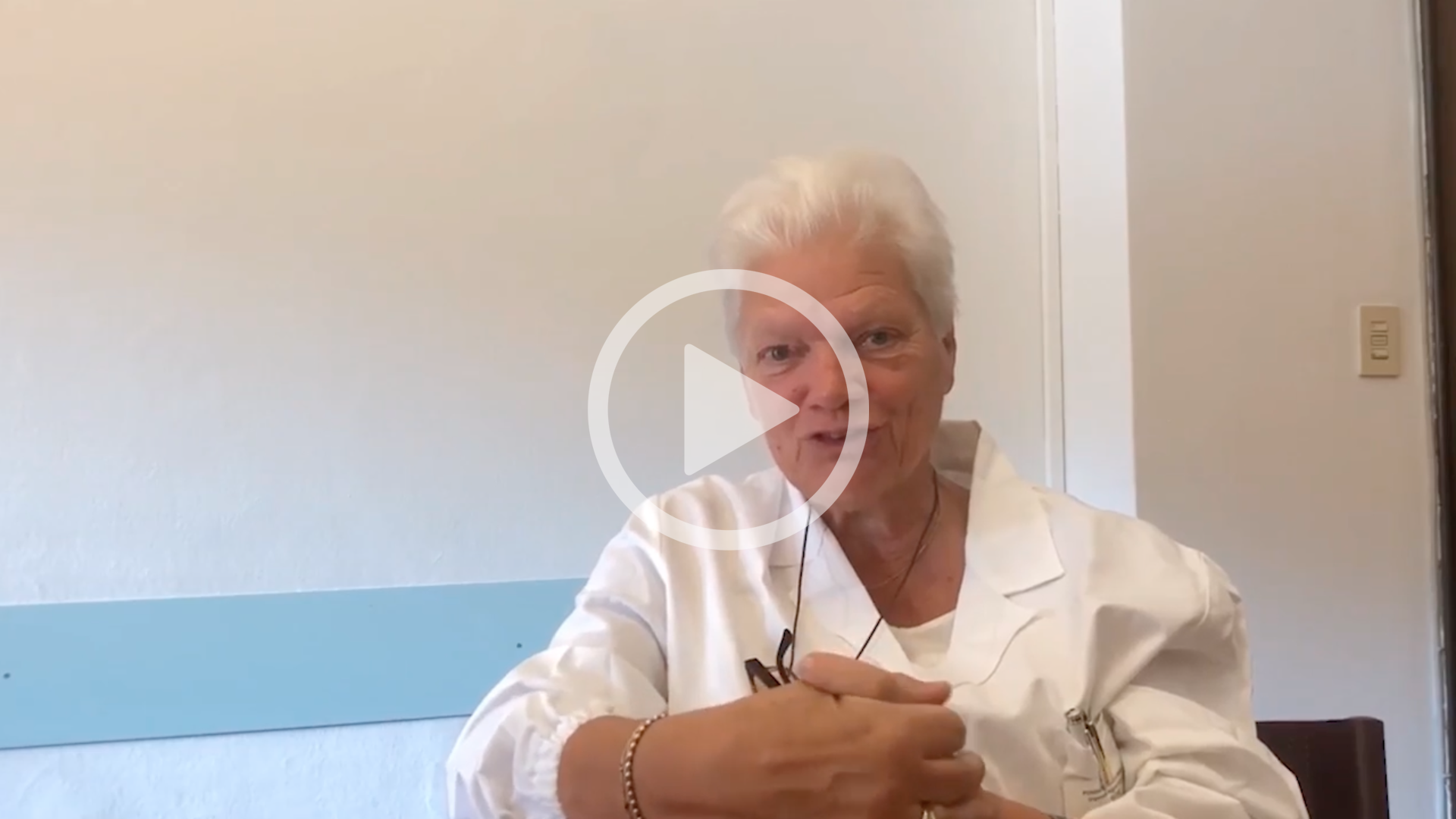 This website is best viewed
This website is best viewed
using the horizontal display on
your tablet device.
Healthcare Professionals only.
ENGLISH
FRANÇAIS
Complications associated with chronic anemia
Reduced hemoglobin production
The production of hemoglobin is frequently reduced in hematological diseases. Since the majority of iron transported into erythroblasts is incorporated into heme, reduced heme production can lead to excess iron build-up in erythroid cells.2,4 Additionally, hemoglobin shortage in the body is compensated by an increase in intestinal iron uptake.5 The combination of reduced hemoglobin levels and iron build-up leads to iron overload.6
Impact on health-related quality of life
The impact of anemia on health-related quality of life has been studied in patient populations with a range of hematological disorders. Anemia was associated with a reduced health-related quality of life, with severe fatigue being the main symptom in patients.7
Chronic anemia is associated with symptoms such as fatigue, dyspnea, tachycardia, hypotension, low body temperature and an enlarged spleen.2,8,9 If left untreated, this condition may result in further complications, such as heart failure (due to rapid or an irregular heartbeat), cognitive impairment, renal failure or death.2,5
For more information on the implications of ineffective erythropoiesis, please visit Implications of IE
 This website is best viewed
This website is best viewed
using the vertical display on
your mobile device.



 6-minute video
6-minute video